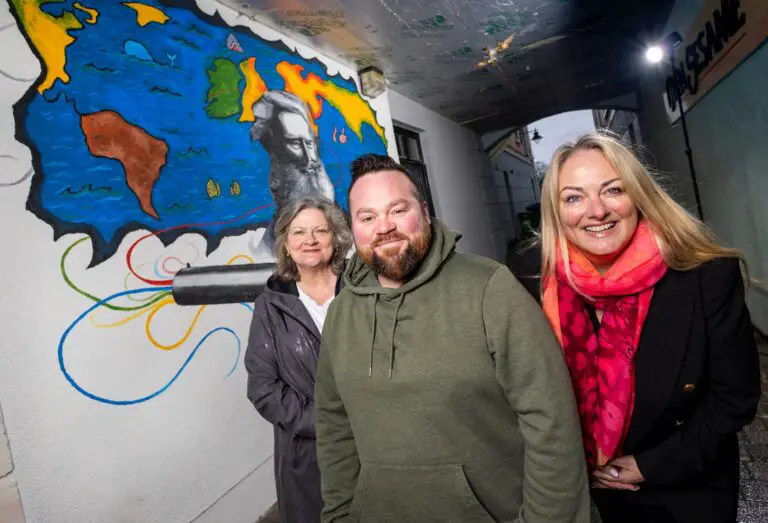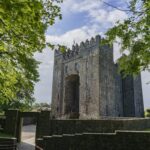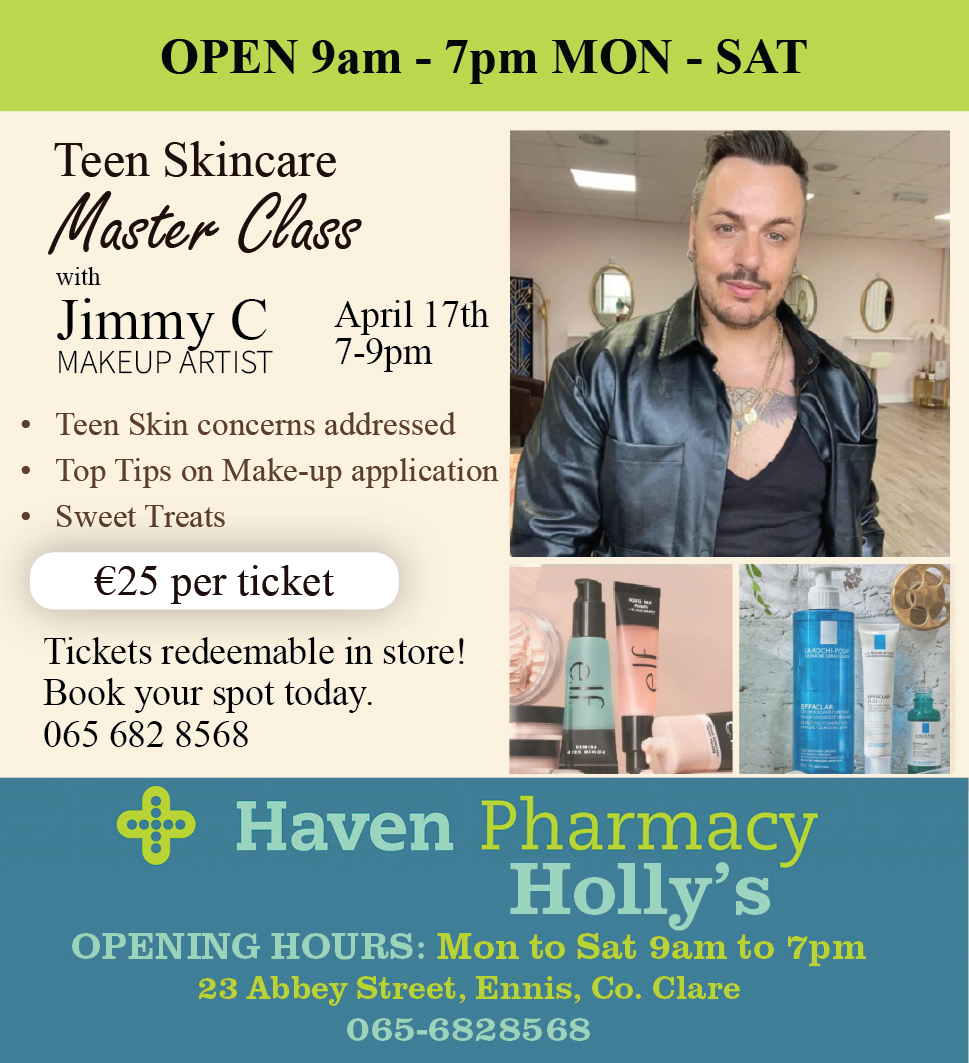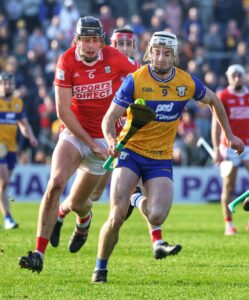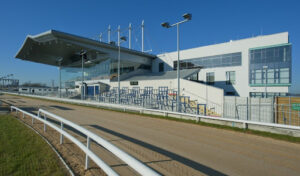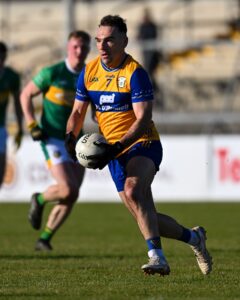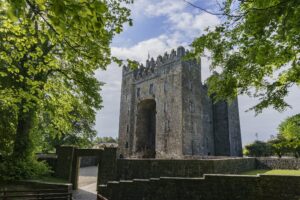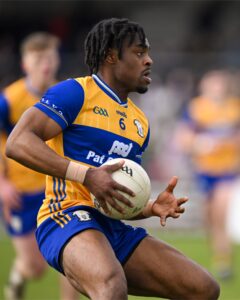Margaret O’Brien and Cllr Mary Howard at the O’Gorman Mahon Mural with artist Joe Kelly. Photograph: Arthur Ellis
A HERITAGE MURAL TRAIL in Ennis celebrates the lives and colourful stories of persons linked to the town that have been scribed in history.
Four lives are celebrated in the themed mural trail, namely Tom Steele, James Patrick Mahon, Harriet Smithson Berlioz and James Bartholomew Blackwell. Their selection was decided by the ‘Memory Lane’ group which is comprised of Cllr Mary Howard (FG), Ennis Tidy Towns Chairperson Cormac McCarthy, local historian Larry Brennan and CEO of Ennis Chamber, Margaret O’Brien.
Their initial task was to brainstorm ideals for a heritage mural trail in the town to celebrate the lives and colourful stories of characters born in or associated with Ennis, persons who had not been yet celebrated in a visible way.
James Patrick Mahon was born in Mill St, what is now 40 Parnell St, in 1802. He joined the Catholic Association and was the driving force behind Daniel O’Connell’s 1828 election victory in the Clare election. Mahon was elected an MP for Clare two years later but was unseated following a charge of bribery. He contested the 1831 election but lost to a candidate backed by O’Connell, leading to a rift between the pair which never healed.
In 1835, he set out to tour most of Europe, in particular France, where he worked as a journalist and moved in most influential circles. He also travelled to Africa, to east and south America. Following defeat in the 1847 General Election, he returned to foreign travel. The Czar of Russia appointed him lieutenant in his international bodyguard, a position above many of his generals. He held the rank of captain or general under most of the flags of Europe and colonel in the French army under Napoleon III.
Mahon was a general on the side of the Uruguayan government in their civil war and fought in the American civil war on the side of the North. He returned to Ireland in 1871 and joined Parnell’s Home Rule party. He was elected M.P. for Clare in 1879 and again in 1885, and for Carlow in 1887. He was the most notorious adventurer and duellist of his time. His reputation as a swashbuckling Irishman was as well known in Berlin, Paris and London as it was in Ireland, and his adventures in south America have given rise to legends about him. His mural by Ennis artist Joe Kelly is located at Halloran’s Lane opposite the cinema on Parnell St and his the plaque commemorating his birthplace.
Harriet Smithson Berlioz was born in Ennis in 1800. She took up acting and made her first appearance on stage at the Cron Street Theatre, Dublin. In 1817 she went to England and although lacking in experience, attracted attention and by 1818 she was appearing in Drury Lane Theatre. It was in France, however, that she achieved great acclaim, portraying the leading lady in Shakespeare’s ‘Romeo and Juliet’ to packed audiences which included many celebrities of the time, among them the rising young composer, Hector Berlioz, who was not only enchanted by the play, but was later to fall in love with the leading lady. His world renowned ‘Symphonie Fantastique’ was inspired by the woman from Cook’s Lane.
They later married and had a son Louis in August 1834. However, some years later, their marriage became strained, largely due to Harriet’s waning career. As she aged, leading lady roles started to elude her, it was also said she became jealous of her husband’s success and popularity with women. They eventually separated. Harriet began to suffer from a paralysis which left her unable to talk or move. She died in March 1954. Her mural by Quin artist Helen Lowe is located on Post Office Lane.
James Bartholomew Blackwell was born in Barrack Street, Ennis in 1763. He was closely related to Dr Bartholomew Murray, a generous benefactor of the Irish College in Paris. At the age of eleven James left Ennis for Paris and began ecclesiastical studies. However, he discovered early on that he had no vocation to the priesthood, and later studied medicine at the Bicetre Hospital. He later entered military service.
Irish historian, Richard Hayes has noted how Blackwell associated himself with the Reform Party before the outbreak of the French Revolution, “becoming an intimate friend of Georges Danton, Camille Desmoulins and the other leading spirits of the clubs who helped to precipitate the insurrection of July 14th, 1789”.
A section of the Faubourg Saint Antoine, a district noted as the nursery of Paris revolutions, chose Blackwell as their leader for the attack on the Bastille. The taking of the Bastille constituted the first great journée of the French Revolution, marking the collapse of absolute monarchy. Robert Downey has completed the mural on Blackwell which is located at Westby’s Lane.
Tom Steele’s mural by artist Rachael McManus is in Eamon de Valera Park. Tom was born in Derrymore, on November 3rd, 1788. He was said to be one of the best Greek scholars of his day, and was also an engineer of some note having designed a more efficient type of diving bell, in which he descended off the coast of Wexford.
Steele was an idealist, who dreamed of romance. Attracted to Matilda Crowe of Abbeyfield House, and convinced she held similar feelings for him, despite the advice he received from his friends, he would stand or sit on a rock, now known as Steele’s Rock on the bank on the River Fergus opposite her house. However, she never acknowledged his presence.
Unsuccessful in love he set out for Spain in 1823 to join the Spanish people in their revolt against Ferdinand VII, fighting at Cadiz and Trocedero. He later wrote an account of his Spanish activities entitled “Notes of the War in Spain”.
Upon his return to Ireland he threw himself whole heartedly into the agitation for Catholic Emancipation, playing a major role in Daniel O’Connell’s 1828 election. By 1847, when his great friend Daniel O’ Connell died, Ireland was a country of fever and famine, Tom was broken-hearted and penniless. Under great strain in London in 1848 he threw himself into the Thames off Waterloo Bridge. He was rescued and taken to Peel’s Coffee House in Fleet Street. He died a few days later on June 15th, 1848.
Cllr Howard who chaired the group admitted that choosing a shortlist was a challenge. “Some of the characters whose names cropped up in our early brainstorm were unknown, and yet we were amazed by the colourful lives they led”.
Surprise on the wealth of characters in Ennis was also voiced by Margaret. “The group’s ambition was not only to create a mural trail but to also create linkages and opportunities for further discussion or celebration. For example, the real life version of the duelling gun depicted in Joe Kelly’s tribute to the O’Gorman Mahon on Halloran’s Lane can be seen in Clare Museum and therefore gives visitors, and indeed locals an added reason to visit our fantastic local museum,” she said.
Clare Arts Office will shortly position a QR Code at each location to give locals and visitors access to the story behind each piece. Funding for the project was via submission to Clare Arts Office under the PRISM mural project, funded by Creative Ireland. The Tom Steele mural was separately funded but under the same scheme.

